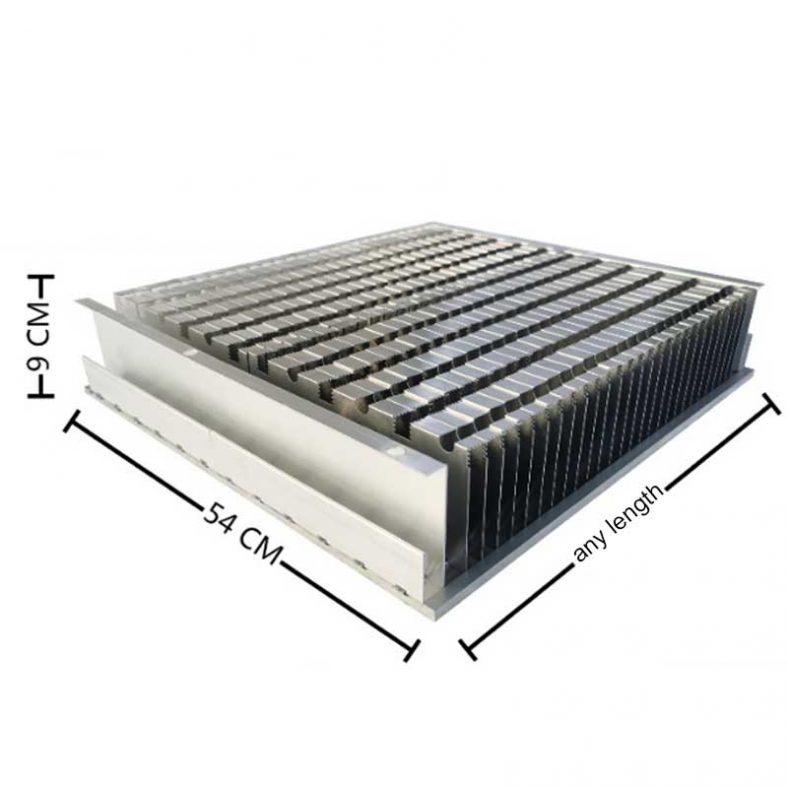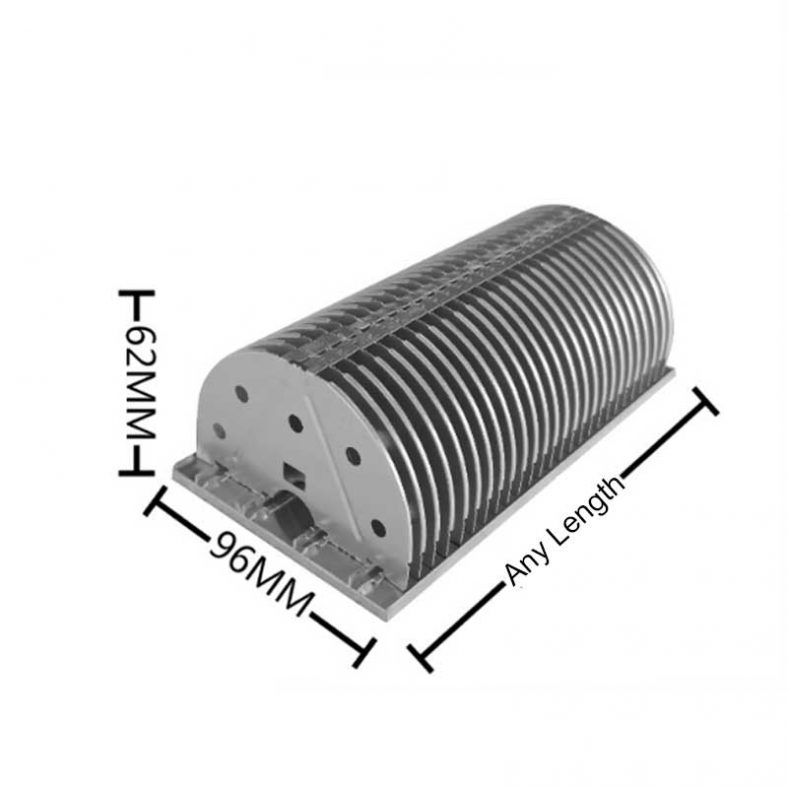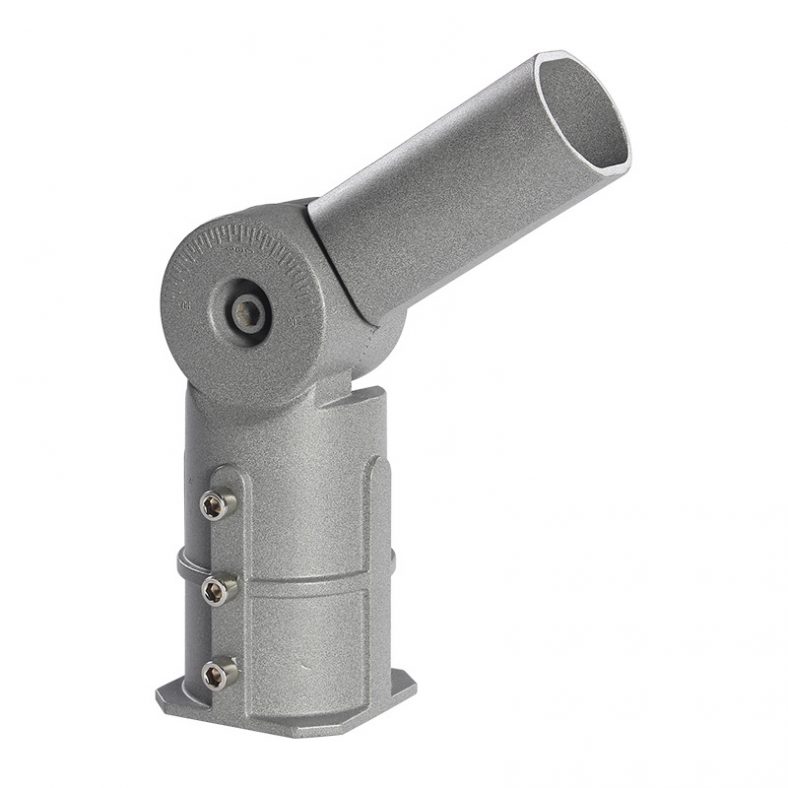
LED Warehouse Lights Manufacturer
LED Warehouse Lighting to meet your every need.
As a reliable Warehouse Lighting manufacturer, supplier, and factory in China, we provide the best quality warehouse lamps with 50W/modular, 100W/modular, 200W/modular, and 250w/modular available. Their wattage includes 50W 100W 150W 200W 250W 300W 400W 500W 600W 1000W 1200W 1500W 2000W Max. They consist of an aluminum body and PC lens, the IP grade can be IP66. Using the Meanwell/DONE/MOSO/SOSEN/PHILIPS driver and Osram, CREE, Philips Chips, LED Warehouse Lighting fixtures deliver high Lumen of exceptional 80+ CRI, get CSA, UL, DLC certificated. They have been tested and found in compliance with accepted national standards, related to energy efficiency and meets requirements which necessary for sale or distribution in the USA.Wandan Lighting’s led warehouse lights provides 5-year warranty against any defect in materials under normal use and service after proper installation. When you need experienced technical help for issues that can’t be resolved you can always count on our friendly support.
LED Warehouse Lights
Wandan Lighting specialist offers a wide variety of LED Warehouse Lights to meet your every need.
LED warehouse lights are high-quality lighting fixtures designed to illuminate large indoor spaces such as warehouses, factories, and industrial buildings. They use Light Emitting Diode (LED) technology to produce bright, energy-efficient light that is ideal for commercial and industrial applications.
LED warehouse lights are typically mounted on the ceiling or suspended from the roof of the building and are designed to provide uniform illumination throughout the space. They are available in a range of sizes, styles, and color temperatures to suit different lighting needs.
Compared to traditional lighting systems such as metal halide or high-pressure sodium lamps, LED warehouse lights have several advantages. They are more energy-efficient, have a longer lifespan, and require less maintenance. They also produce less heat and are less likely to break, making them a safer and more durable lighting option.
In addition to lighting warehouses and industrial buildings, LED warehouse lights are also used in other applications such as parking garages, sports facilities, and retail stores, where high-quality lighting is essential for safety, productivity, and customer satisfaction.
Relate LED Warehouse Lights
Wandan Lighting specialist offers a wide variety of LED Warehouse Lights to meet your every need.
-
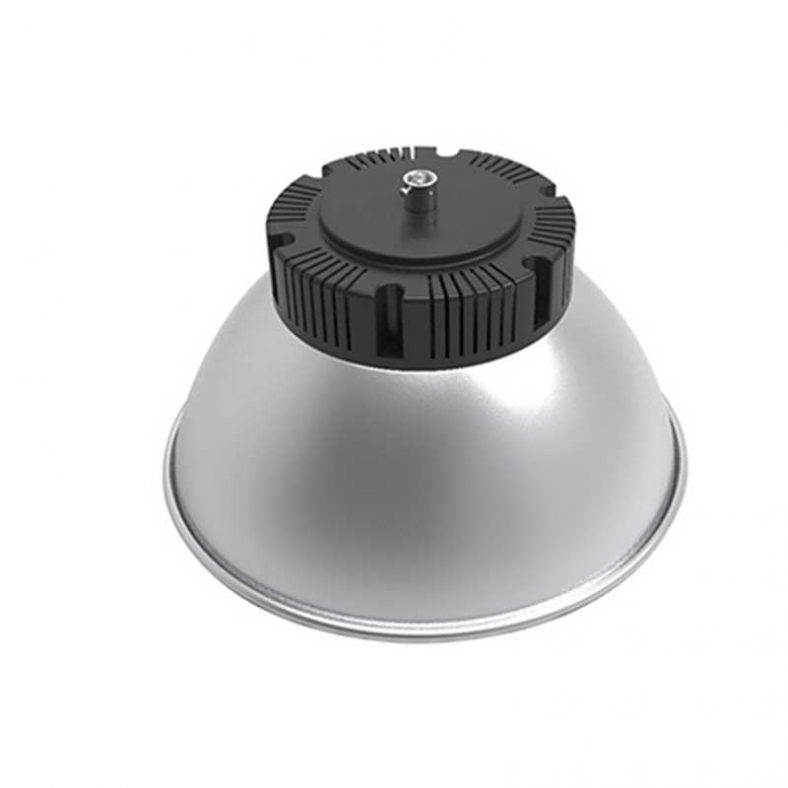
Louver Type LED High Bay Light
-
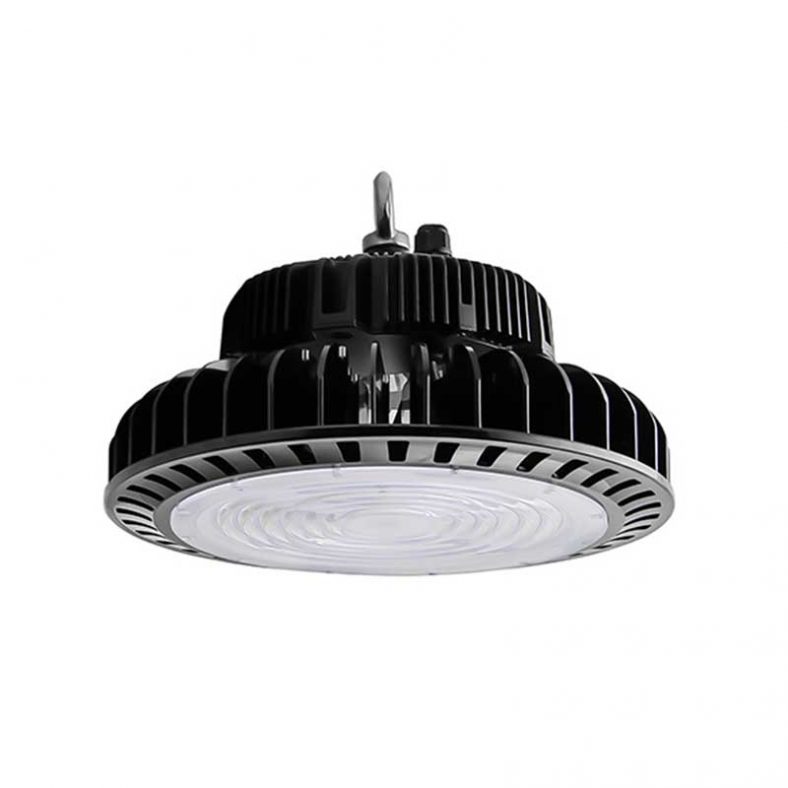
30000lm 100W To 250W UFO Led High Bay Light
-
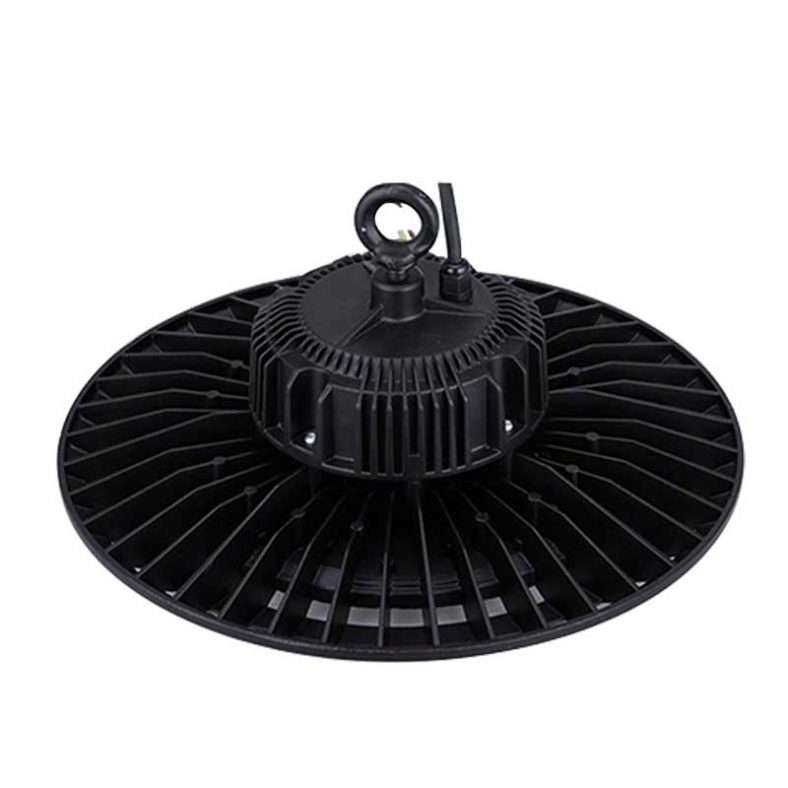
3D Heat Dissipation Ufo LED High Bay Light
-
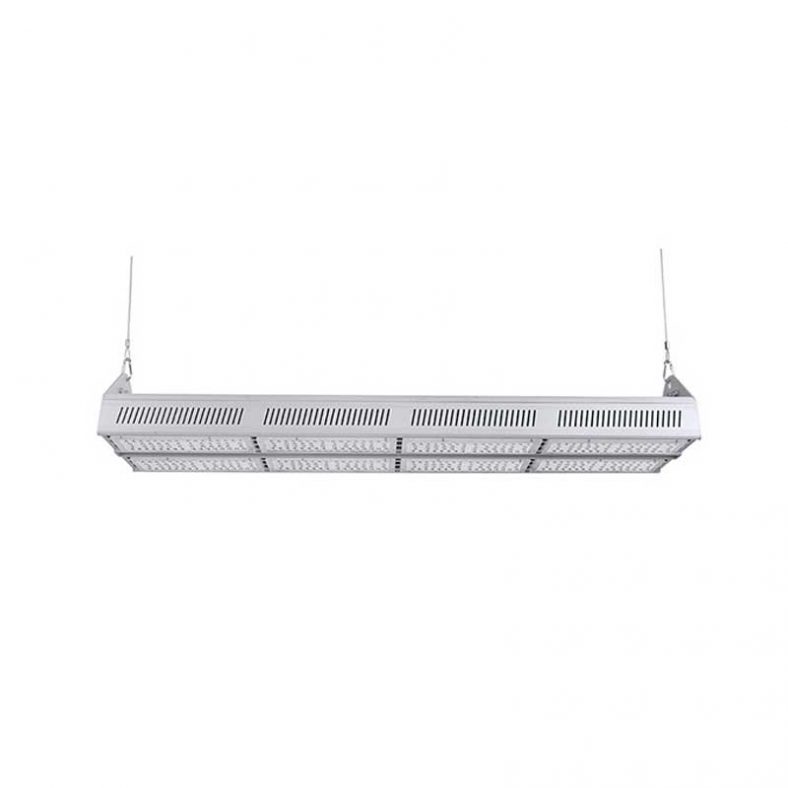
CREE/LUMILEDS3030 Linear LED High Bay Light
-
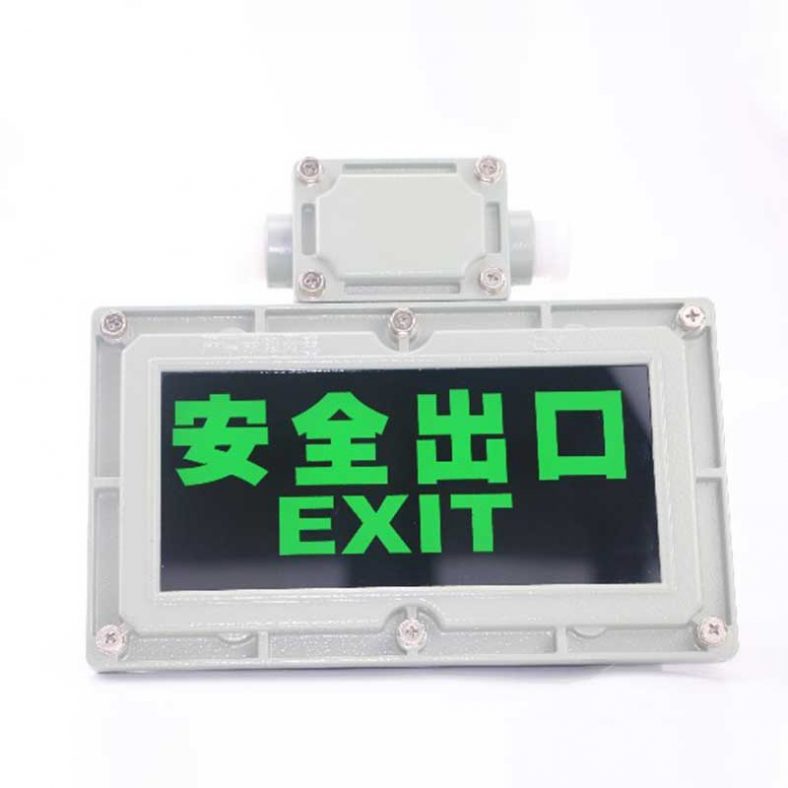
50Hz Explosion-Proof Emergency Sign Light
-
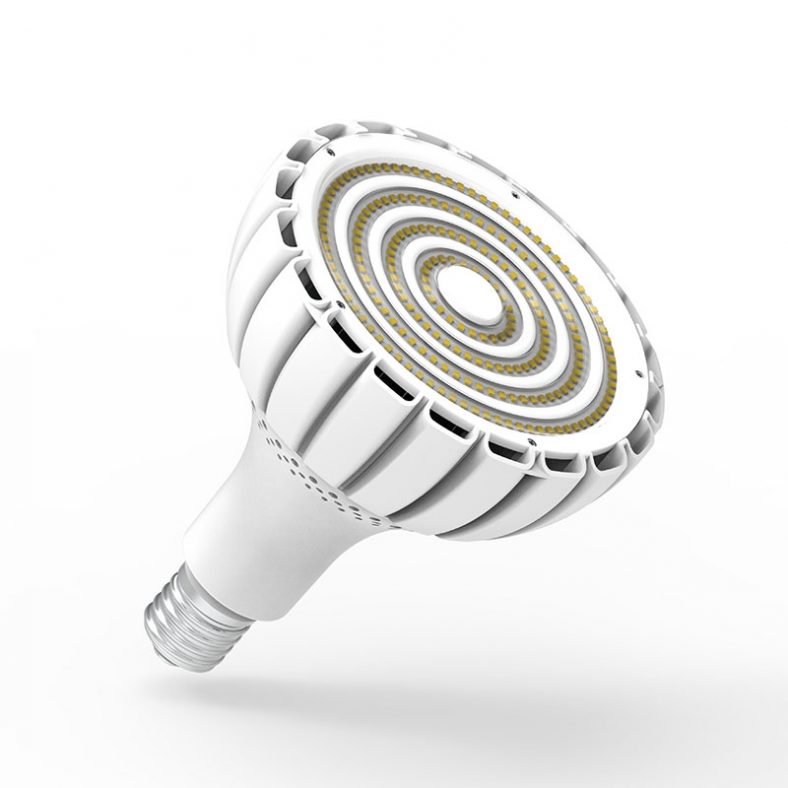
High Power LED Bulb Light With High Lumen LEDs
-
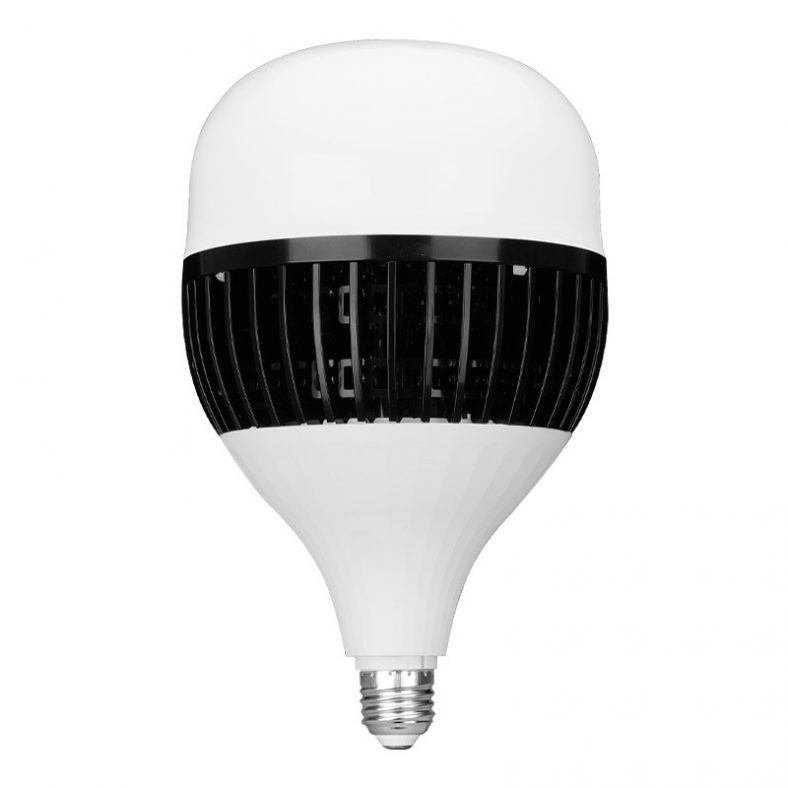
E27 Screw Household 200W Bulb Light
-
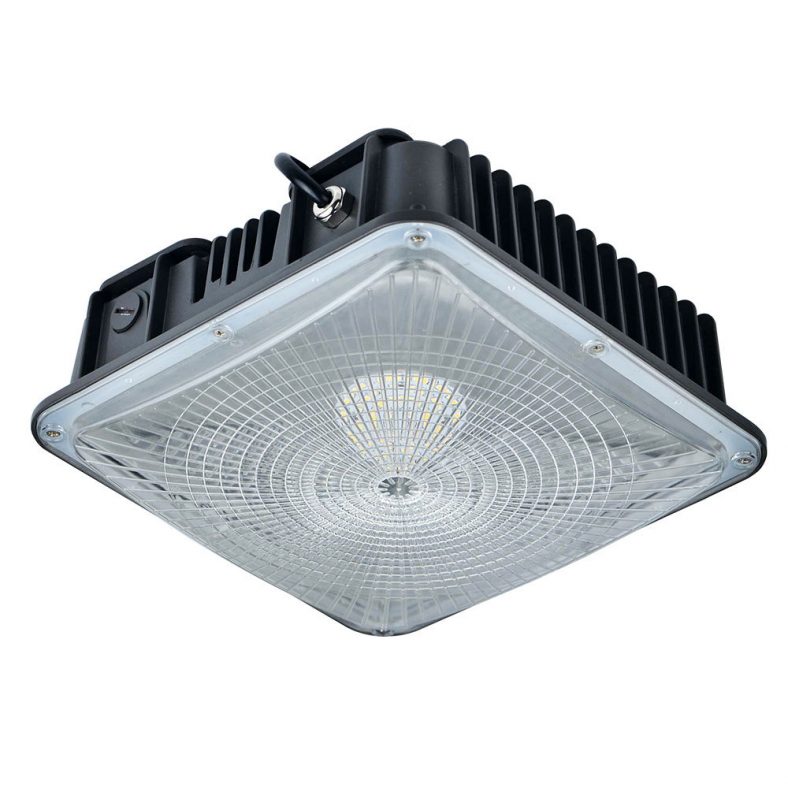
IP67 LED Canopy Lights Use For Parking Lot And Garage
LED Warehouse Lights Kits/Parts
Wandan Lighting specialist offers a wide variety of LED Warehouse Lights to meet your every need.
LED Warehouse Lights Buy guide
Wandan Lighting specialist offers a wide variety of LED Warehouse Lights to meet your every need.
Lighting a warehouse requires careful consideration of the space, its purpose, and the tasks that need to be performed within it. Here are some general steps to follow when lighting a warehouse:
- Determine the lighting needs: Assess the needs of the space by considering the type of work being done, the size of the warehouse, the height of the ceilings, and the natural light available.
- Calculate the necessary illumination level: The recommended light levels depend on the type of activity being performed. General warehousing, storage, and other low-activity areas typically require illumination levels of 30-50 foot-candles, whereas detailed work and inspection areas require up to 100-150 foot-candles.
- Choose the lighting fixtures: Select the type of fixture that is best suited for your warehouse. LED lights are the most popular choice due to their energy efficiency, long lifespan, and low maintenance requirements.
- Determine the placement of the fixtures: The fixtures should be placed strategically to ensure uniform light distribution throughout the warehouse. Consider the ceiling height and the location of the aisles and racks when determining the placement.
- Consider lighting controls: Lighting controls, such as motion sensors, timers, and dimmers, can help reduce energy consumption and extend the life of the bulbs. They can also improve safety by ensuring that the lights are only on when needed.
- Ensure compliance with safety standards: Make sure that your lighting design complies with relevant safety standards, such as OSHA regulations, to ensure a safe working environment for your employees.
- Test the lighting: Once the fixtures are installed, test the lighting to ensure that the illumination levels are adequate and that there are no dark spots or glare.
Remember to consult with a qualified electrician or lighting designer to ensure that your warehouse lighting meets your needs and complies with all relevant safety standards.
Yes, street lights and warehouse light bulbs are different. They are designed for different purposes and have different characteristics.
Street lights are designed to provide illumination to public areas, such as roads, sidewalks, and parks. They typically use high-intensity discharge (HID) lamps, such as high-pressure sodium (HPS) or metal halide lamps, which produce a bright, intense light that can cover a large area. They are also designed to withstand harsh weather conditions and are often mounted on tall poles to provide a broad coverage area.
Warehouse light bulbs, on the other hand, are designed to provide illumination in large indoor spaces, such as warehouses, factories, and distribution centers. They typically use LED lights, which are energy-efficient and long-lasting, and can be installed in a variety of fixtures, such as high bay lights or linear strip lights. Warehouse lights are also designed to provide uniform illumination throughout the space, and often incorporate lighting controls, such as motion sensors or timers, to help reduce energy consumption.
Overall, while there may be some overlap in the types of bulbs used in both street lights and warehouse lights, the design and characteristics of the fixtures are typically quite different due to their intended purposes.
The number of lumens required to light a warehouse will depend on several factors, including the size and shape of the warehouse, the type of work being done, and the level of illumination required. However, as a general guideline, the Illuminating Engineering Society (IES) recommends a minimum of 50 lumens per square foot for general warehouse lighting. This means that if a warehouse is 10,000 square feet, it would require a total of 500,000 lumens (10,000 sq. ft. x 50 lumens/sq. ft.) of lighting.
It is important to note that this is just a minimum guideline, and depending on the specific requirements of the site, additional lighting may be necessary. For example, areas with high ceilings or narrow aisles may require more lighting to achieve the required level of illumination. Additionally, some types of work may require a higher level of illumination, such as detailed assembly or inspection work, which may require up to 100 lumens per square foot.
When designing the lighting for a warehouse, it is important to consider the type of fixtures being used, the spacing and orientation of the fixtures, and the control systems used to manage the lighting. It is recommended to work with a lighting professional to ensure that the lighting design meets the specific needs of the warehouse while also maximizing energy efficiency and minimizing costs.
The number of watts needed to light a 3800 sq ft warehouse will depend on several factors, including the type of lighting fixtures being used, the desired level of illumination, and the efficiency of the lighting system. However, as a general guideline, the Illuminating Engineering Society (IES) recommends a minimum of 0.5 watts per square foot for general warehouse lighting. This means that a 3800 sq ft warehouse would require a total of 1900 watts (3800 sq ft x 0.5 watts/sq ft) of lighting.
It is important to note that this is just a minimum guideline, and depending on the specific requirements of the site, additional lighting may be necessary. For example, areas with high ceilings or narrow aisles may require more lighting to achieve the required level of illumination. Additionally, some types of work may require a higher level of illumination, which would require additional wattage.
When designing the lighting for a warehouse, it is recommended to work with a lighting professional to ensure that the lighting design meets the specific needs of the warehouse while also maximizing energy efficiency and minimizing costs. The type of fixtures being used, the spacing and orientation of the fixtures, and the control systems used to manage the lighting can all affect the number of watts required to light the warehouse.
The cost to replace highbay lights in a warehouse will depend on several factors, including the type and number of fixtures being used, the complexity of the installation, and the labor costs in the area. Here are some of the factors that can affect the cost of replacing highbay lights in a warehouse:
- Type and number of fixtures: The cost of fixtures can vary depending on the type and quality of the highbay lights being used. Highbay lighting fixtures can range from basic fluorescent fixtures to more advanced LED fixtures, which can affect the cost of the replacement. The number of fixtures needed will also depend on the size and layout of the warehouse, as well as the desired level of illumination.
- Labor costs: The cost of labor can vary depending on the location and the complexity of the installation. If the installation requires specialized skills or equipment, this can increase the cost of the replacement.
- Wiring and controls: The cost of wiring and controls can also affect the overall cost of the replacement. If the warehouse requires new wiring or control systems, this can add to the cost of the replacement.
- Additional costs: Other costs that may affect the overall cost of the replacement include permits, inspections, and any necessary upgrades to the electrical system.
Overall, the cost to replace highbay lights in a warehouse can range from a few hundred dollars to several thousand dollars per fixture, depending on the specific requirements of the site. It is recommended to work with a lighting professional to determine the specific costs for your warehouse and to ensure that the replacement meets the specific needs of the site while also maximizing energy efficiency and minimizing costs.
Calculating the lighting needs for a warehouse involves several factors, including the size of the space, the type of activities being conducted in the warehouse, and the desired level of illumination. Here are the basic steps to calculate the lighting needs for a warehouse:
- Determine the size of the warehouse: Measure the length, width, and height of the warehouse to determine the total square footage and cubic footage of the space.
- Determine the activities in the warehouse: The type of activities being conducted in the warehouse will affect the lighting needs. For example, if the warehouse is used for detailed work such as assembly, a higher level of illumination may be necessary.
- Determine the desired level of illumination: The desired level of illumination will depend on the activities in the warehouse. The Illuminating Engineering Society of North America (IESNA) provides recommended illumination levels for different types of activities in their Lighting Handbook.
- Calculate the required lumens: To calculate the required lumens for the warehouse, multiply the total square footage of the warehouse by the recommended illumination level (in foot-candles) for the type of activities being conducted. For example, if the warehouse is 10,000 square feet and the recommended illumination level for assembly work is 50 foot-candles, the required lumens would be 10,000 x 50 = 500,000 lumens.
- Choose the appropriate lighting fixtures: Choose lighting fixtures that can provide the required level of illumination for the warehouse. The type and number of fixtures needed will depend on the size and layout of the warehouse, as well as the type of activities being conducted.
- Consider energy efficiency: When selecting lighting fixtures, consider energy efficiency to reduce energy costs and environmental impact. LED lighting is often a good choice for warehouses due to its energy efficiency and long lifespan.
Overall, it is recommended to work with a lighting professional to ensure that the lighting design for the warehouse meets the specific needs of the site while also maximizing energy efficiency and minimizing costs.
Warehouse lighting is a crucial component in creating a safe and efficient working environment. Here is a brief guide to warehouse lighting:
- Assess the space: Start by assessing the size and shape of the warehouse. Consider the height of the ceilings, the type of work being done, and any areas that may require specialized lighting, such as loading docks or inspection areas.
- Determine the illumination level: Determine the illumination level required for the space. This will depend on the type of work being done and can vary between 30-50 foot-candles for general warehousing, storage, and low-activity areas, and up to 100-150 foot-candles for detailed work and inspection areas.
- Choose the lighting fixtures: Select lighting fixtures that are energy-efficient, low-maintenance, and durable. LED lighting is a popular choice for warehouse lighting due to its long lifespan and low energy consumption.
- Place fixtures strategically: Place the fixtures strategically to ensure that the lighting is evenly distributed throughout the warehouse. Consider the height of the ceilings, the location of the aisles, and the placement of any racks or shelving units.
- Consider lighting controls: Incorporate lighting controls, such as motion sensors or timers, to help reduce energy consumption and extend the life of the bulbs.
- Ensure compliance with safety standards: Make sure that your lighting design complies with relevant safety standards, such as OSHA regulations. This will ensure a safe working environment for your employees.
- Test the lighting: Once the fixtures are installed, test the lighting to ensure that the illumination levels are adequate and that there are no dark spots or glare.
Proper warehouse lighting is critical to creating a safe and productive working environment. By following these guidelines, you can design a lighting plan that meets the needs of your warehouse and ensures the safety of your employees.
Yes, turning off warehouse lights can have an effect on temperature. Lights generate heat as a byproduct of their operation, so when they are on, they contribute to the overall temperature of the space. When they are turned off, the heat generated by the lights dissipates, which can result in a slight decrease in temperature.
The amount of temperature change that results from turning off the lights will depend on a variety of factors, such as the size of the warehouse, the number and type of lights being used, and the existing temperature and humidity conditions. In some cases, the temperature change may be barely perceptible, while in others, it may be more significant.
It is worth noting that while turning off the lights may result in a temporary decrease in temperature, it is unlikely to have a significant or long-lasting impact on the overall temperature of the warehouse. Other factors, such as the ambient temperature and humidity, the efficiency of the HVAC system, and the thermal insulation of the building, will have a much greater impact on the temperature of the space.
The spacing of exterior lights for a warehouse will depend on several factors, including the size and shape of the warehouse, the height of the lights, the level of illumination required, and any specific lighting requirements for the site. Here are some general guidelines for spacing exterior lights for a warehouse:
- Determine the lighting level required: The first step is to determine the level of illumination required for the site. This will depend on factors such as the size and shape of the warehouse, the type of work being done, and the level of security required.
- Select the type of lights: Choose the type of lights that are appropriate for the site. Common types of exterior lights used for warehouses include floodlights, wall-mounted fixtures, and high bay lights.
- Determine the height of the lights: The height of the lights will depend on the size and shape of the warehouse, as well as the level of illumination required. As a general rule, the higher the light, the larger the area it will illuminate. However, higher lights may require more fixtures to achieve the required illumination level.
- Space the lights evenly: The lights should be spaced evenly to ensure that the illumination is uniform throughout the site. As a general rule, lights should be spaced approximately 1.5 to 2 times the height of the fixture apart.
- Consider the angle of the lights: The angle of the lights will also affect the spacing. Lights with a narrower beam angle may need to be spaced closer together to achieve the required illumination level.
- Test the lighting: Once the lights are installed, test the lighting to ensure that the illumination level is adequate and that there are no dark spots or glare.
Overall, the spacing of exterior lights for a warehouse will depend on the specific requirements of the site. It is important to consult with a lighting professional to determine the appropriate spacing and type of lights for your particular application.
LED lights can save a warehouse a significant amount of money compared to traditional lighting systems. The amount of savings will depend on several factors, including the size of the warehouse, the type and number of lighting fixtures, and the energy cost in the area.
Here are some ways that LED lights can save a warehouse money:
- Energy efficiency: LED lights are much more energy efficient than traditional lighting systems, which means they use less electricity to produce the same amount of light. According to the US Department of Energy, LED lights use up to 75% less energy than traditional lighting systems. This can result in significant savings on energy bills for the warehouse.
- Longer lifespan: LED lights have a longer lifespan than traditional lighting systems, which means they require less maintenance and fewer replacements. This can result in cost savings on replacement bulbs, labor costs for maintenance, and disposal costs for old bulbs.
- Reduced cooling costs: LED lights produce less heat than traditional lighting systems, which means they can help reduce cooling costs in the warehouse. This can result in additional energy savings and cost savings on HVAC systems.
Overall, the amount of money that LED lights can save a warehouse will depend on the specific circumstances of the site. However, studies have shown that warehouses can save up to 50% on lighting costs by switching to LED lights. Additionally, LED lights can have a positive impact on the environment by reducing energy usage and greenhouse gas emissions.
The cost to install indirect LED lighting in a warehouse will depend on several factors, including the size and layout of the warehouse, the type and number of fixtures being used, the complexity of the installation, and the labor costs in the area. Here are some of the factors that can affect the cost of installing indirect LED lighting in a warehouse:
- Type and number of fixtures: The cost of fixtures can vary depending on the type and quality of the LED lights being used. Indirect LED lighting fixtures can range from simple linear fixtures to more complex suspended fixtures, which can affect the cost of the installation. The number of fixtures needed will also depend on the size and layout of the warehouse, as well as the desired level of illumination.
- Labor costs: The cost of labor can vary depending on the location and the complexity of the installation. If the installation requires specialized skills or equipment, this can increase the cost of the installation.
- Wiring and controls: The cost of wiring and controls can also affect the overall cost of the installation. If the warehouse requires new wiring or control systems, this can add to the cost of the installation.
- Additional costs: Other costs that may affect the overall cost of the installation include permits, inspections, and any necessary upgrades to the electrical system.
Overall, the cost to install indirect LED lighting in a warehouse can range from a few thousand dollars to tens of thousands of dollars, depending on the specific requirements of the site. It is recommended to work with a lighting professional to determine the specific costs for your warehouse and to ensure that the installation meets the specific needs of the site while also maximizing energy efficiency and minimizing costs.
Choosing high bay lighting for your warehouse involves several factors, including the size and layout of the space, the type of activities being conducted, and the desired level of illumination. Here are some steps to help you choose the best high bay lighting for your warehouse:
- Determine the size of the warehouse: Measure the length, width, and height of the warehouse to determine the total square footage and cubic footage of the space.
- Determine the activities in the warehouse: The type of activities being conducted in the warehouse will affect the lighting needs. For example, if the warehouse is used for detailed work such as assembly, a higher level of illumination may be necessary.
- Determine the desired level of illumination: The desired level of illumination will depend on the activities in the warehouse. The Illuminating Engineering Society of North America (IESNA) provides recommended illumination levels for different types of activities in their Lighting Handbook.
- Choose the appropriate type of high bay lighting: There are several types of high bay lighting, including fluorescent, metal halide, and LED. LED lighting is often the best choice for warehouses due to its energy efficiency, long lifespan, and high quality of light.
- Choose the appropriate wattage: The wattage of the high bay lighting will depend on the size and layout of the warehouse, as well as the desired level of illumination. A lighting professional can help you determine the appropriate wattage for your warehouse.
- Consider the beam angle: The beam angle of the high bay lighting will affect the distribution of light in the warehouse. A narrow beam angle may be appropriate for high shelving, while a wider beam angle may be better for lower shelves.
- Consider additional features: Additional features such as dimming capabilities, motion sensors, and daylight sensors can help reduce energy costs and improve lighting control in the warehouse.
Overall, it is recommended to work with a lighting professional to ensure that the high bay lighting design for the warehouse meets the specific needs of the site while also maximizing energy efficiency and minimizing costs.


